The last in a long line of super successful Saturn rockets rolled out from the Vehicle Assembly Building (VAB) to Launch Pad 39B at the Kennedy Space Center (KSC) on March 24, 1975. The rocket for the Apollo-Soyuz Test Project (ASTP) was the 19th in the Saturn class to be stacked in the VAB since 1966, beginning with the Saturn V 500F facilities checkout vehicle. Thirteen flight Saturn V rockets followed, 12 to launch Apollo spacecraft and one to place the Skylab space station into orbit. In addition, workers stacked four flight Saturn IB rockets, three to launch crews to Skylab and one for ASTP, plus the Saturn IB for the Skylab Rescue Vehicle that was not needed and never launched. Earlier Saturn I and Saturn IB rockets were stacked on the pads at Launch Complexes 34 and 37. With a successful ASTP liftoff in July 1975, the Saturn family of rockets racked up a 100% success rate of 32 launches.
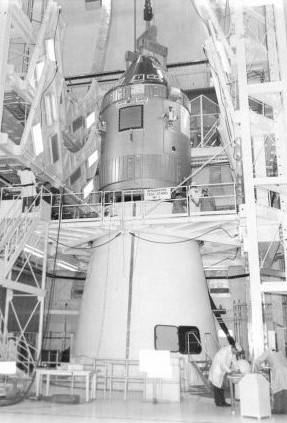
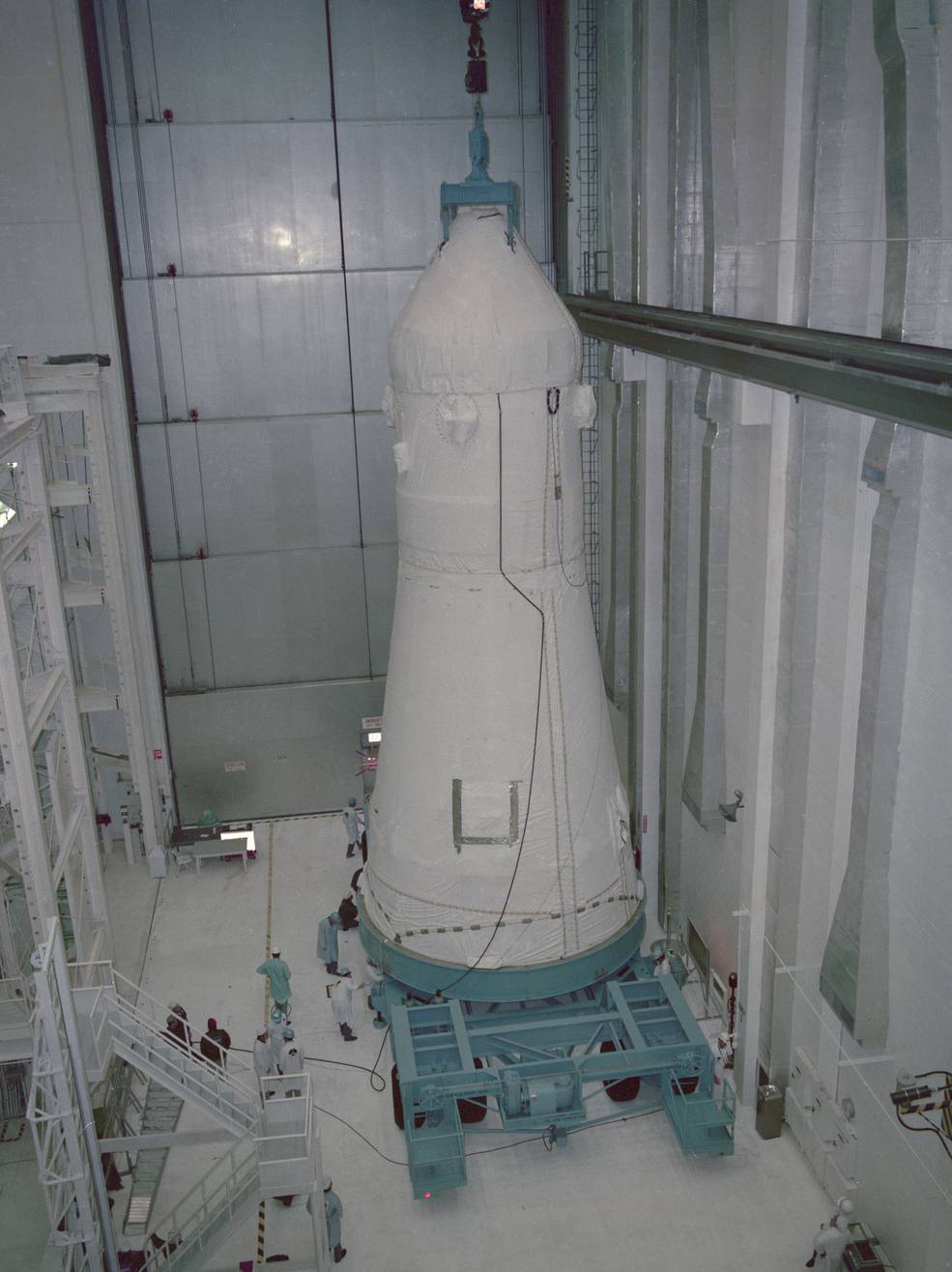
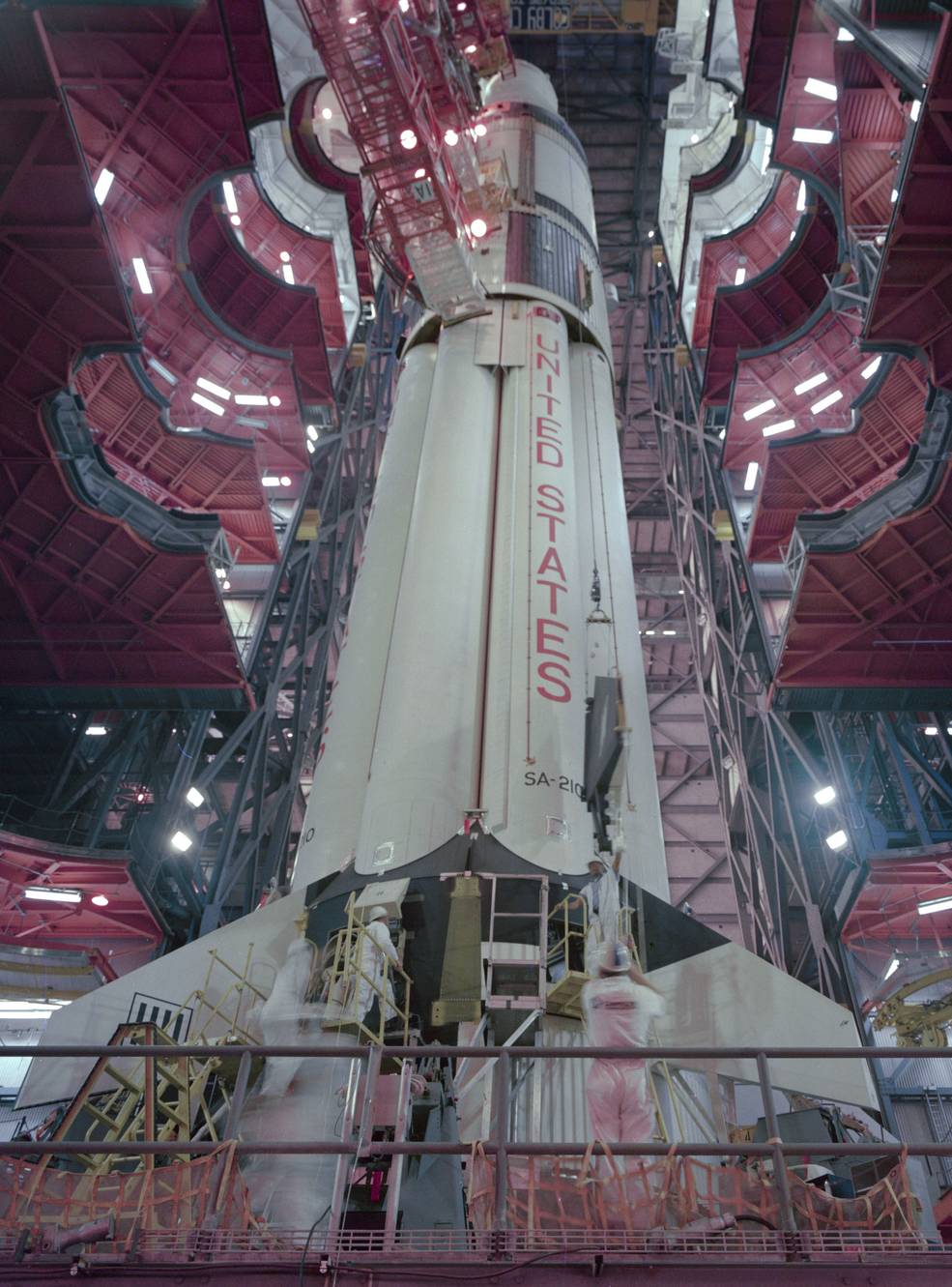
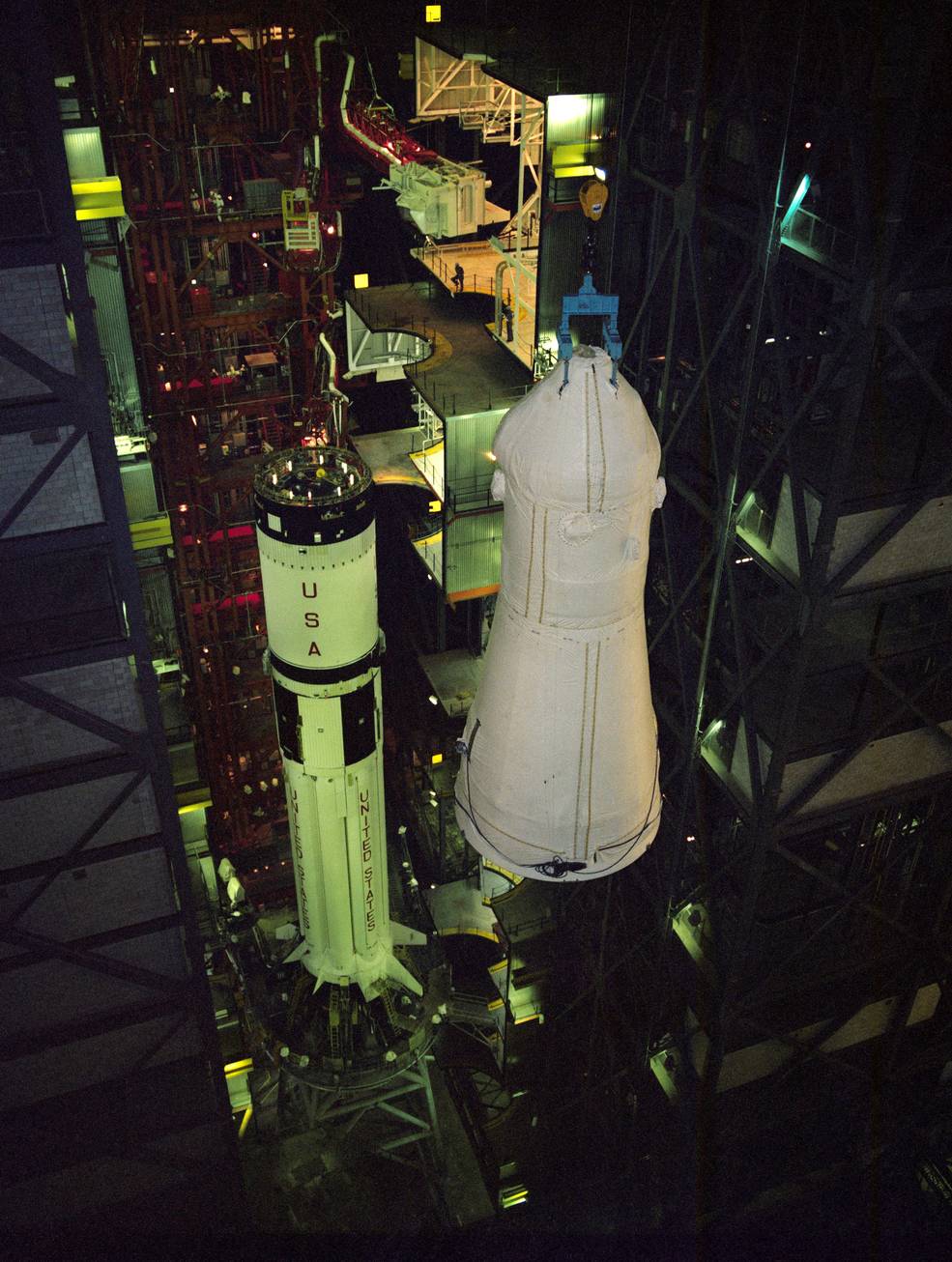
Far left: Workers lower the ASTP CSM onto the SLA. Middle left: Workers ready the ASTP spacecraft for the move
from the MSOB to the VAB. Middle right: Workers in the VAB replace the fins on the ASTP Saturn IB’s first stage.
Far right: Workers in the VAB prepare to mate the ASTP spacecraft with its Saturn IB rocket.
Inspections of the ASTP Saturn IB rocket’s first stage fins revealed hairline cracks in several holddown fittings and managers ordered the replacement of all eight fins. While the cracks would not affect the flight of the rocket, they were located in an area that bore the weight of the rocket on the mobile launcher. Workers finished the fin replacement on March 16. Engineers in KSC’s Manned Spacecraft Operations Building (MSOB) prepared the Apollo spacecraft for its historic space mission. In late February, they lowered the Docking Module (DM) into the Spacecraft Lunar Module (LM) Adaptor (SLA), where the LM sat during Apollo Moon missions. In early March, they lowered the Command and Service Module (CSM) onto the SLA to complete the spacecraft assembly and transported it to the VAB on March 17 where engineers mounted it atop the Saturn IB’s second stage. Five days later, they topped off the rocket with the Launch Escape System.
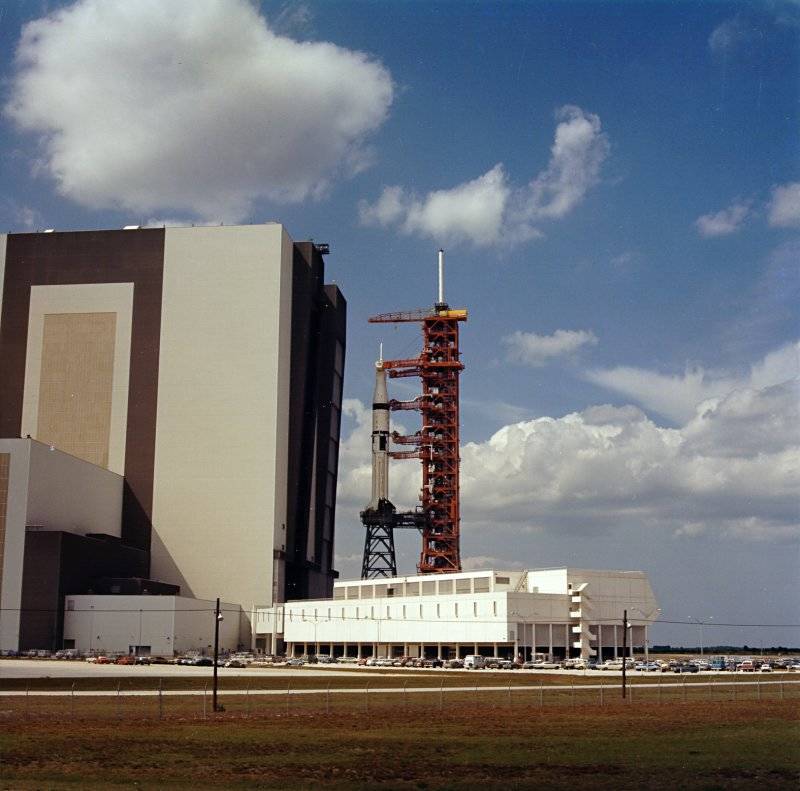
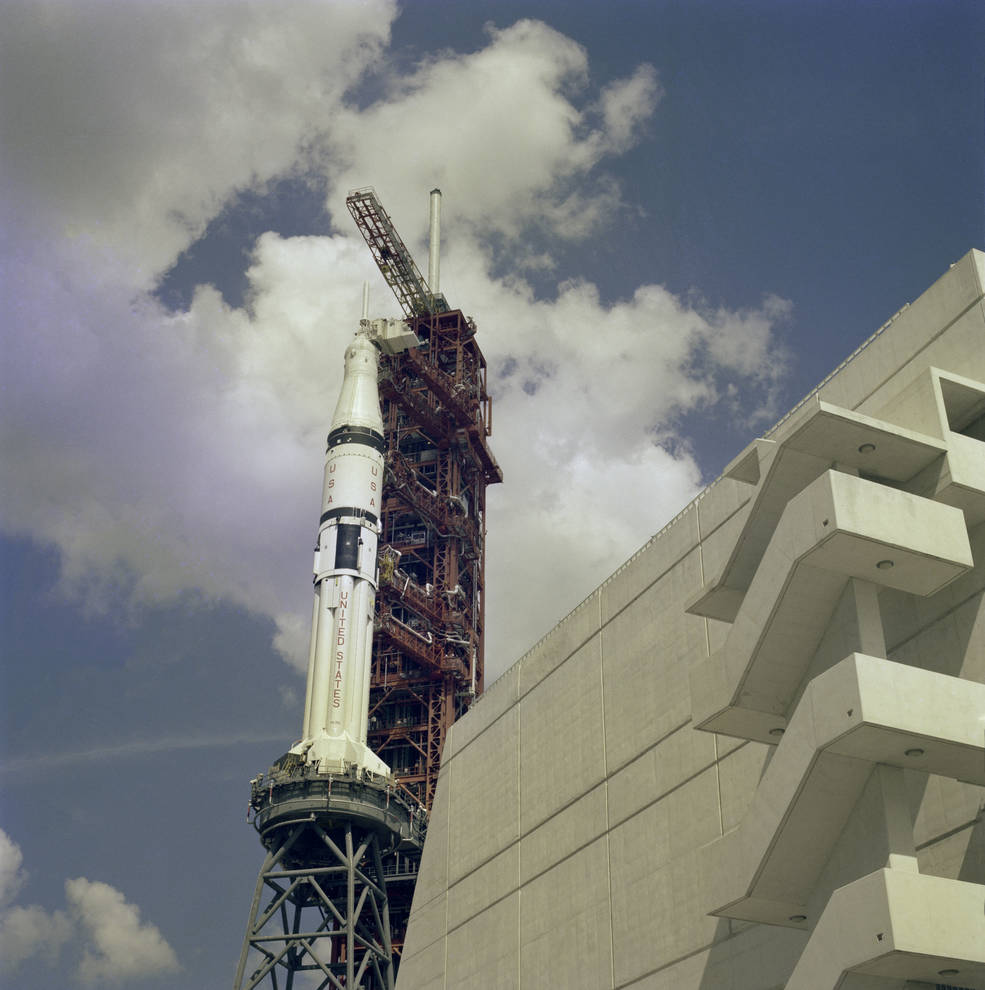
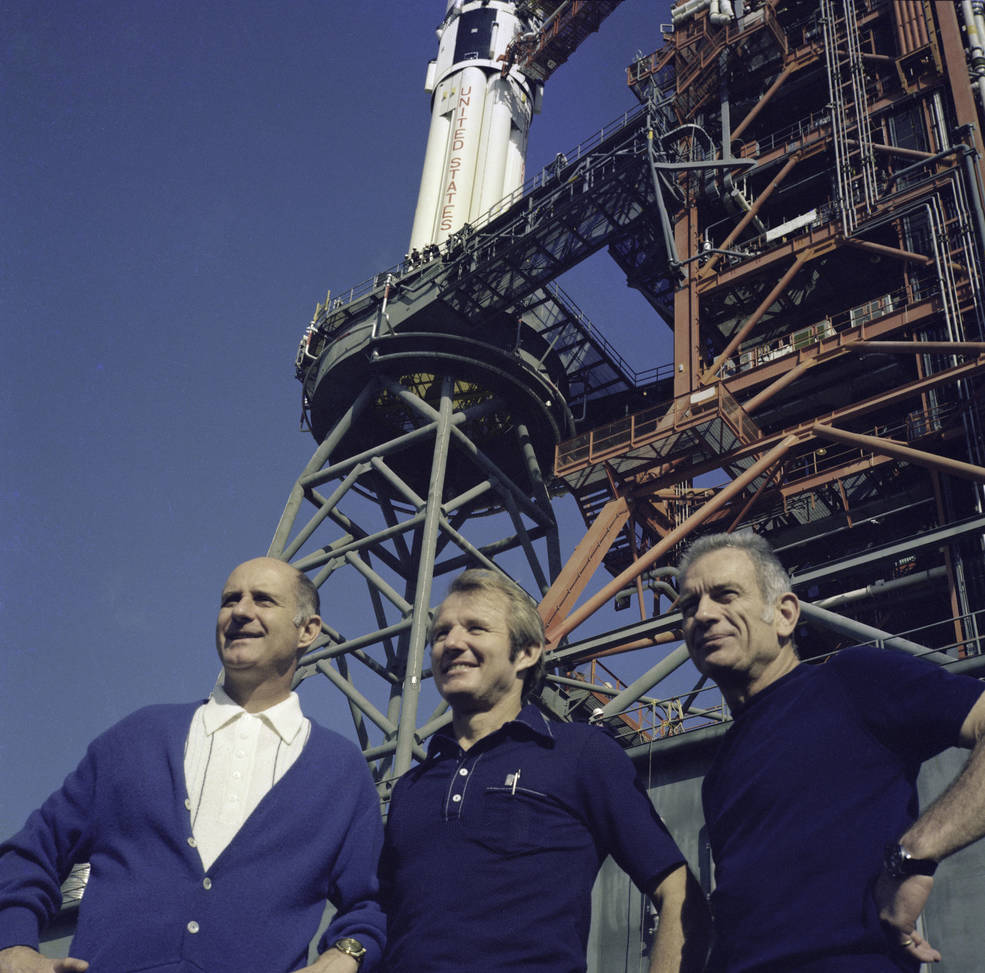
Left: The ASTP Saturn IB begins its rollout from the VAB. Middle: The ASTP Saturn IB passing by the Launch
Control Center. Right: ASTP astronauts (left to right) Stafford, Brand and Slayton pose in front of their Saturn IB
during the rollout.
On March 23, workers edged the Mobile Transporter carrying the ASTP Saturn IB just outside the VAB’s High Bay 1, where engineers installed an 80-foot tall lightning mast atop the Launch Tower. The next morning, the stack continued its rollout to Launch Pad 39B with the ASTP prime crew of Thomas P. Stafford, Vance D. Brand and Donald K. “Deke” Slayton and support crewmembers Robert L. Crippen and Richard H. Truly on hand to observe. About 7,500 people, including guests, dependents of KSC employees and NASA Tours patrons, watched as the stack moved slowly out of the VAB on its five-mile journey to the launch pad.
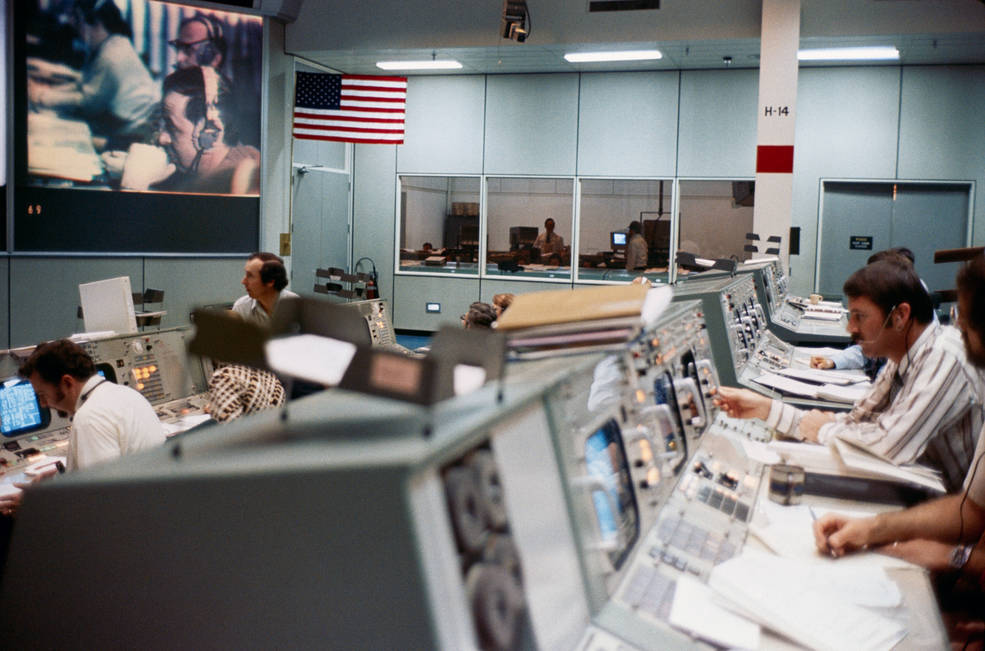
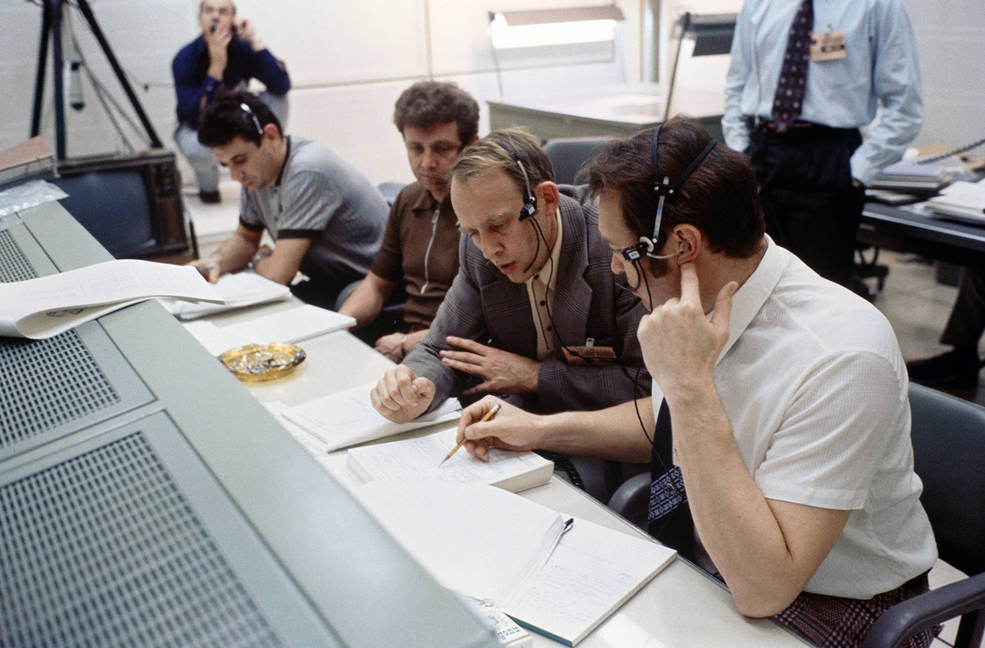
Left: Mission Control in Houston during the joint ASTP simulation with Flight Director Donald R. Puddy
in striped shirt and a view of Mission Control in Moscow on the large screen at left. Right: A group of
Soviet flight controllers in a support room in Mission Control in Houston during the joint ASTP simulation.
On March 20, flight controllers and crews began a series of joint simulations for the ASTP mission scheduled for July 1975. For the six days of simulations, the Soviet crew of Aleksei A. Leonov and Valeri N. Kubasov and the American crew of Stafford, Brand and Slayton participated in the activity in spacecraft simulators in their respective countries, with both control centers in Houston and Moscow fully staffed as if for the actual mission. The exercises simulated various phases of the mission, including the respective launches, rendezvous and docking, crew transfers and joint operations, and undocking.
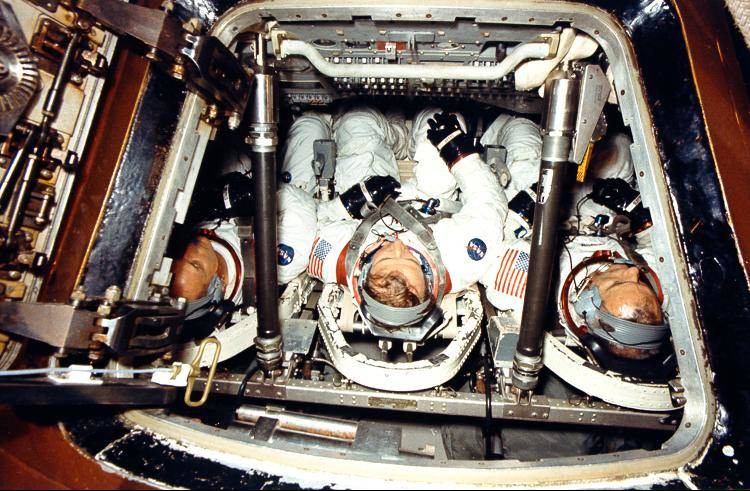
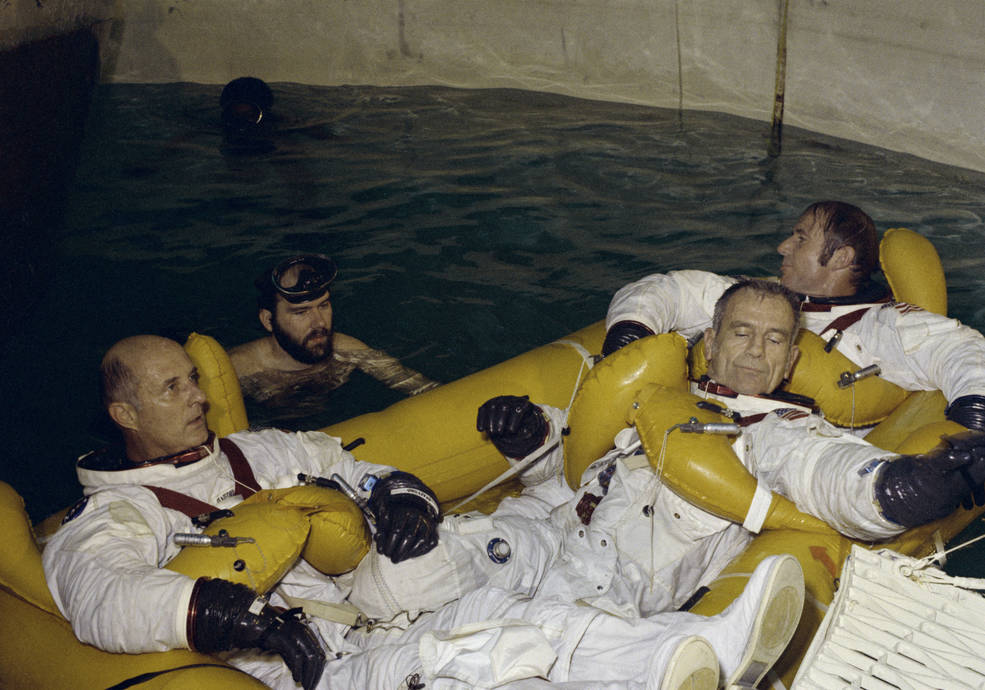
Left: ASTP astronauts (left to right) in a boilerplate Command Module preparing for the water
egress training. Right: ASTP astronauts (left to right) Stafford, Slayton and Brand in the life raft
during water egress training.
The ASTP crew of Stafford, Brand and Slayton participated in a water egress training activity on March 8. Normally held in the Gulf of Mexico, they completed the exercise in a water tank in Building 260 at the Johnson Space Center in Houston. The crewmembers practiced egressing from their spacecraft onto a lift raft and being lifted up with the use of a Billy Pugh rescue net. They practiced wearing their flight coveralls as well as their spacesuits.
To be continued…
News events from around the world in March 1975:
March 1 – Color television transmissions begin in Australia.
March 1 – Eagles’ “Best of My Love” reaches #1.
March 9 – Construction of the Trans-Alaska Pipeline System begins.
March 10 – “The Rocky Horror Picture Show” opens at Belasco Theater in New York City.
March 16 – U.S. Mariner 10 spacecraft makes third and final fly-by of Mercury.
March 19 – Pennsylvania is 1st state to allow girls to compete with boys in HS sports.
March 21 – Ethiopia abolishes its monarchy after 3,000 years.
March 26 – “Tommy” premieres in London.
March 26 – The Biological Weapons Convention enters into force.
March 31 – 37th NCAA Men’s Basketball Championship: UCLA beats Kentucky, 92-85.




























